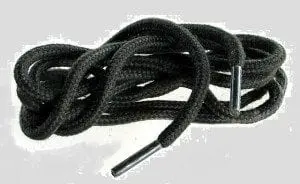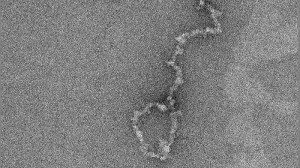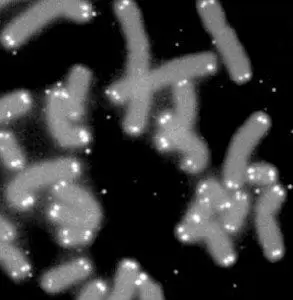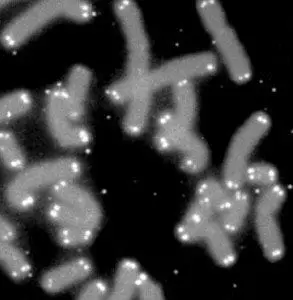A while back I was listening to a lecture for doctors on some new discoveries about our DNA and how it affects our health (boy, does it ever). A lot of the stuff made my eyes want to cross, but then the speaker explained something using words kids know all about.
She compared part of our DNA to the plastic tips of a shoelace. I’d tell you they were like Aglets, but did you know that’s what the end covers were called? Me, neither.

Telomeres [TEA-low-meerz] is the name a researcher gave these little end caps back in 1938. It took us many more decades to figure out what was going on, though. We’re still studying what affects them and how medicine can help us have healthy Telomeres.
So, what are they and how do they work? I found a great 2 minute video to explain things for you.
From the Smithsonian Channel:
http://youtu.be/8_bNfQd7Smc
Something I didn’t run into until searching for images of a Telomere is their shape. DNA doesn’t have room to stretch out straight inside a cell’s nucleus, it’s almost 6′ [2m] long! So it loops and twists in fascinating ways. So do Telomeres. Have a look at this photo:

Click the picture to see The Cell Website I ran into.
There’s a study from 1999 in the Journal CELL talking about this. The diagram showing how it fits together is quite interesting. I wonder why this info isn’t easier to find online. But, now you know!
To understand what’s going on even better, the University of Utah has a GREAT PAGE showing how the DNA letters repeat to hold the ends of the chromosome together and why they get shorter over time. Basically, the copier has to start with a bit of RNA in place already, so it can’t copy the letters where the RNA attaches. They did a great job making things easy to understand and have cool illustrations.
In fact, don’t read any further until you’ve CLICKED on their link and scroll down to the drawing of a technicolor Telomerase subunit. You can see an even more amazing illustration at the Telomerase Database website.
Now, tell me. Is that a simple, easy to slosh together piece of equipment? Or, is it something it would take a lot of smarts to design?
OK, what is that Telomerase? It is an enzyme (a protein to help the body do things) some cells use to rebuild their Telomeres.

Basically, after a cell has made about 50-70 copies of itself, the Telomeres get so short they don’t work properly. The cell recognizes this and shuts down. No new copies of that cell ever again. We now know this one of the things controlling how long we live.
Since we realized Telomeres are something to watch for, researchers have been doing a bunch of studies about how life can affect them.
When I started research for this article, I was hoping to find websites already designed for kids to understand what’s going on. But plugging in the keyword “kids” along with Telomere gave me some interesting results.
Turns out we know life can hit children’s Telomeres hard. Here are a few things that can give people shorter Telomeres and probably a shorter life:
•Neglect: Kids raised in an institution instead of a home (even a foster home helps)
•Family Trauma: Interestingly, they found girls had it worse
•Rough Life: This study started out assuming boys would have a hard time. They did
•Bullying: being bullied didn’t just rob you of your lunch money
It’s not only kids who develop shorter Telomeres from these kinds of problems. Studies have been done seeing if lifestyle changes can help adults protect their Telomeres. Here are some things they found keep them from shrinking or can even cause them to get longer:
•Lower stress
•Stop smoking
•Eat healthy
•Have good friends
•Exercise
Several of the kids’ studies noticed that having a good mom helped protects kids’ cells. See how having good friends helped grownups, too? Turns out, taking care of yourself mentally, physically, and emotionally makes a real difference.
Hmm, it seems like there is an ancient guidebook recommending this kind of lifestyle to all of us. Perhaps the Author knew what He was talking about so long ago because He designed us- and our Telomeres.
Praise God, our Creator, who gave us such wonderful protections for our bodies and didn’t leave us alone to suffer when we rejected Him at the beginning!
Thy hands have made me and fashioned me: give me understanding, that I may learn thy commandments. Psalm 119:73
More soon!







